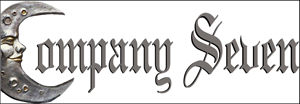
"Eye Safety during Solar Eclipses"
An excellent primer by those in the know at NASA


|
C-7 Home Page |
||
|

"Eye Safety during Solar Eclipses"An excellent primer by those in the know at NASA
| ||
Generally, the same equipment, techniques and precautions used to observe the Sun outside of eclipse are required for annular eclipses and the partial phases of total eclipses [Reynolds & Sweetsir, 1995; Pasachoff & Covington, 1993; Pasachoff & Menzel, 1992; Sherrod, 1981]. The safest and most inexpensive of these methods is by projection, in which a pinhole or small opening is used to cast the image of the Sun on a screen placed a half-meter or more beyond the opening. Projected images of the Sun may even be seen on the ground in the small openings created by interlacing fingers, or in the dappled sunlight beneath a leafy tree. Binoculars can also be used to project a magnified image of the Sun on a white card, but you must avoid the temptation of using these instruments for direct viewing.
The Sun can be viewed directly only when using filters specifically designed for this purpose. Such filters usually have a thin layer of aluminum, chromium or silver deposited on their surfaces that attenuates both visible and infrared energy. One of the most widely available filters for safe solar viewing is a number 14 welder's glass, available through welding supply outlets. More recently, aluminized mylar has become a popular, inexpensive alternative. Mylar can easily be cut with scissors and adapted to any kind of box or viewing device. A number of sources for solar filters are listed below. No filter is safe to use with any optical device (i.e. - telescope, binoculars, etc.) unless it has been specifically designed for that purpose. Experienced amateur and professional astronomers may also use one or two layers of completely exposed and fully developed black-and-white film, provided the film contains a silver emulsion. Since all developed color films lack silver, they are always unsafe for use in solar viewing.
Unsafe filters include color film, some non-silver black and white film, medical x-ray films with images on them, smoked glass, photographic neutral density filters and polarizing filters. Solar filters designed to thread into eyepieces which are often sold with inexpensive telescopes are also dangerous. They should not be used for viewing the Sun at any time since they often crack from overheating. Do not experiment with other filters unless you are certain that they are safe. Damage to the eyes comes predominantly from invisible infrared wavelengths. The fact that the Sun appears dark in a filter or that you feel no discomfort does not guarantee that your eyes are safe. Avoid all unnecessary risks. Your local planetarium or amateur astronomy club is also good source for additional information.
In spite of these precautions, the total phase of an eclipse can and should be viewed without any filters whatsoever. The naked eye view of totality is completely safe and is overwhelmingly awe-inspiring!
For more information on eclipse photography, observations and eye safety, see Further Reading in the Bibliography.